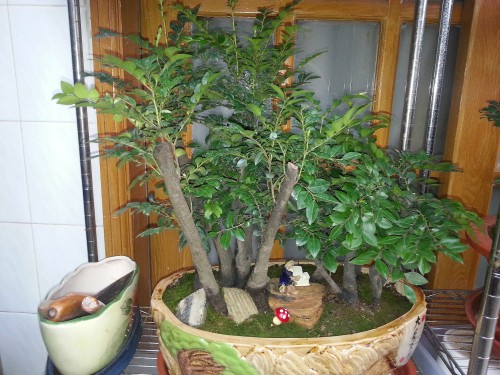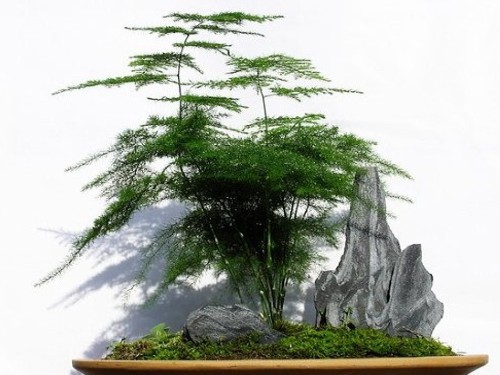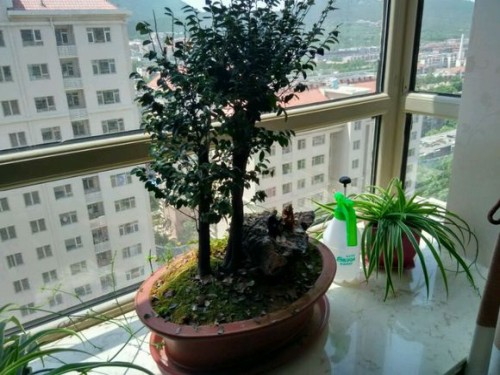Pruning method of lobular red sandalwood bonsai
Red sandalwood is a tropical plant, sunny plant, not resistant to low temperature, well-developed root system and nodules, can fix nitrogen, the soil requirements are not strict. Because the growth is slow, there is no need for special pruning! But yellow leaves, dry tips, withered branches, overgrown flowers affect the beauty, should be often pruned, so as not to affect the beauty.
The vitality of lobular red sandalwood is relatively strong, there is no need to worry about the wrong cut, but its growth rate is slow, so it is necessary to keep the main to go secondary. But it is also necessary to combine the original tree shape and their own creative direction to determine, trees are already in a variety of forms, it is difficult to say! The pruning methods of lobular red sandalwood bonsai are as follows:

The pruning of bonsai should be based on the growth characteristics of plants and the artistic modeling requirements of bonsai. Modeling is very different from normal management pruning. During modeling, when the branches of a tree are cultivated to a suitable thickness, a section is cut off from each branch. If this is taken as the first branch, then the transverse branch that will grow on it will be the second branch. When the second branch grows to the right thickness, it will be cut off to produce the third branch, and so on, resulting in the fourth branch and the fifth branch.
The length of each section and the number of twigs retained must be determined according to the modeling needs, and should be handled flexibly to achieve density and density in order to be picturesque. The period of pruning should be treated differently by tree species. In general, deciduous tree species should be pruned before sprouting after deciduous leaves, evergreen should be pruned when the growth is exuberant, and ornamental trees should be pruned after flowering. In addition, trees should be pruned after a period of time in spring and summer to accumulate nutrients. By the same token, those with strong growth potential can be cut frequently, while those who are weak can be cut less or not.
For trees that have been processed and mature, they need to be pruned frequently in order to keep their tree shape unchanged. Pruning can not only maintain the original tree shape, but also can be changed appropriately to make it more beautiful. However, we should be cautious and have a certain ability of artistic creation. Generally speaking, all cross branches, parallel branches, wheel branches and some unattractive branches need to be pruned. Diseased branches must be cut off. Dense branches and leaves should also be properly pruned to facilitate ventilation and light.
Time: 2019-06-10 Click:
- Prev

How to prune bonsai Phyllostachys pubescens
Asparagus is a perennial vine resident green herbaceous flower, which is called cloud bamboo, pine mountain grass and cloud bamboo mountain grass in some places. Although asparagus has the characteristic of evergreen for many years, if it is not pruned properly in maintenance, it will lead to the symptom of yellowing of branches and leaves and affect the ornamental effect. Asparagus grows longer and longer after it has been raised for a long time.
- Next

How to shape the bonsai of Luohansong
The bonsai trees of Luohan pine are lush and elegant, ancient and vigorous, with bright green leaves all the year round, with a sense of vitality and nobility. If attached to the rock, made into the posture of eagle claw holding stone, more quaint and chic. Luo Hansong and bamboo, stone group scenery, extremely elegant. Jungle style Luohan pine bonsai, coupled with grazing scenery, can give people a wild enjoyment.
Related
- Fuxing push coffee new agricultural production and marketing class: lack of small-scale processing plants
- Jujube rice field leisure farm deep ploughing Yilan for five years to create a space for organic food and play
- Nongyu Farm-A trial of organic papaya for brave women with advanced technology
- Four points for attention in the prevention and control of diseases and insect pests of edible fungi
- How to add nutrient solution to Edible Fungi
- Is there any good way to control edible fungus mites?
- Open Inoculation Technology of Edible Fungi
- Is there any clever way to use fertilizer for edible fungus in winter?
- What agents are used to kill the pathogens of edible fungi in the mushroom shed?
- Rapid drying of Edible Fungi

